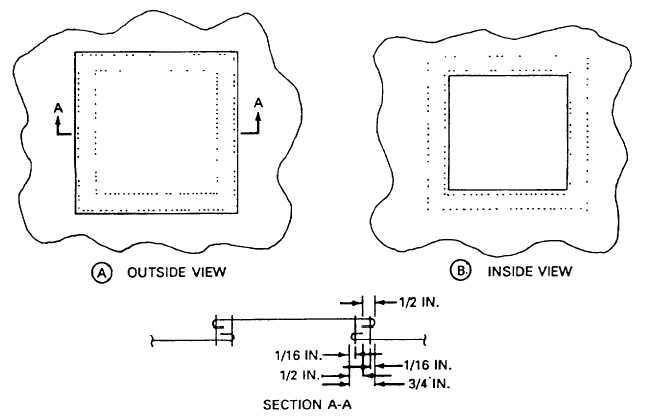ARMY TM 10-1670-294-23&P
AIR FORCE T.O. 13C5-33-2
NAVY NAVAIR 13-1-34
2-38. Deployment Bag Panels and Flaps (cont).
(c)
Cut damaged area fabric along lines made in (b) above. Further cut fabric diagonally
at each corner to allow a 1/2-inch foldback in raw edges
(d)
Make a 1/2-inch foldback on each raw edge. Pin and baste each foldback to complete
prepared hole Basting will be performed using procedures In para. 2-17.
(e)
Using duck cloth, mark and cut a patch 2 1/2 inches wider and longer than inside
measurements of the prepared hole. Ensure that patch material is marked and cut
along the warp or filling of fabric.
(f)
Center patch material over prepared hole and ensure the warp or filling of patch
material matches warp or filling of fabric being patched Pin patch material in position.
(g)
Make a 1/2-inch foldunder on each edge of patch material and baste patch to prepared
area. Basting will be performed using procedures in para 2-17
(h)
Remove push pins securing the item to repair table and secure the patch by stitching,
using applicable details In figure 2-58 and stitching specifics outlined in applicable item
maintenance publication. Make first row of stitching completely around patch. Turn
deployment bag inside out and make second row of stitching around prepared hole.
Stitching will be performed In accordance with para 2-17.
(4)
Restenciling. As required, restencil Identification markings using procedures In para. 2-19.
Figure 2-58. Patching Deployment bag Panels and Flaps.
2-94

